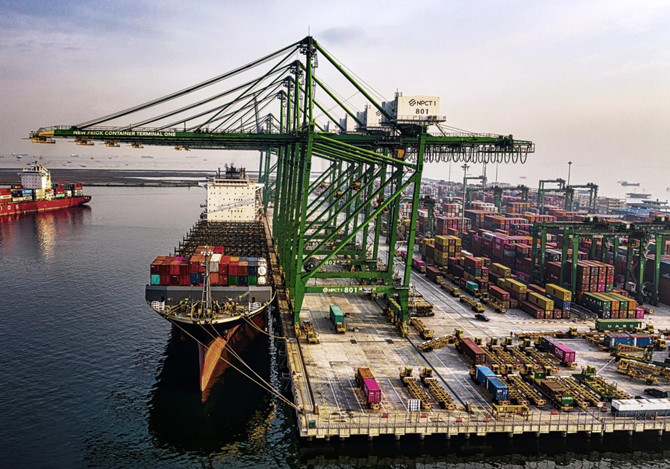
Optimarin's ability to leverage a flexible delivery model for key components for its ballast water treatment system (BWTS) has been vital to overcome supply chain challenges to keep rolling out its in-demand product to clients amid rising orders.
Disruption to the global supply chain has mainly been caused by the Covid-19 pandemic, leading to shortages of items like computer chips due to lockdowns, and the Ukraine crisis has created further bottlenecks that have hit shipping trade.
However, Optimarin has a dual-supplier strategy in place that has enabled it to maintain efficient system deliveries even though supply capacity has been strained as demand has rebounded after the lifting of pandemic restrictions, explains executive vice president supply chain Karl Morten Skjæveland.
“Optimarin operates a lean and highly integrated supply chain based on strong and close co-operation with a network of trusted and reliable suppliers,” he says.
“The company also has in-house control of the critical elements of the value chain, which makes the business scalable and flexible.”
High-quality components
This has proven timely as Optimarin has seen increasing orders for its market-leading BWTS due to the urgent need to retrofit thousands of vessels to achieve compliance with IMO ballast water regulations.
The Norwegian ballast water specialist has continued to be able to source high-quality components that underpin its well-engineered and robust system.
Skjæveland says the company has a very efficient ordering process whereby parts orders are automatically placed with suppliers and shipped to a central warehouse in Luxembourg before onward shipment for installation and commissioning.
The modular nature of the system means it can be transported in a compact form to minimise the environmental footprint of logistics and this also facilitates ease of installation onboard a vessel, he says.
While the system is based on advanced technology, it remains easy to understand and operate using an intuitive touch-screen control panel, with a focus on simplicity, functionality and flexibility.
The so-called Optimarin Ballast System (OBS) has backflushing filters and UV treatment, with separate UV chambers installed on two manifolds and flexibility to add chambers - each with 167m3 per-hour capacity - for increased treatment capacity.
Digital functionality
The modular construction assures redundancy as individual chambers are shut down automatically in the event of a lamp failure in one of them so that the system can remain in operation while the lamp is replaced.
There are also unique energy-saving features such as the flexibility to run the system at reduced capacity if required - for example, when using variable capacities for ballasting and deballasting - and a one-click function for stripping when the optimal number of UV lamps are in use.
Its functionality has been further enhanced with the recent addition of the OptiLink™ ballast water management system - the first in the industry - that is a cloud-based solution for real-time monitoring of the BWTS with ship-to-shore data connectivity.
This digital tool makes ballast water transfer more efficient for faster port turnarounds to reduce downtime and fuel consumption, while providing data transparency to aid regulatory compliance. It also facilitates condition monitoring of the system for proactive maintenance and interactive remote support.
OptiLink™ is the latest innovation from Optimarin, which originally pioneered the first BWTS for shipping that was installed on the cruise ship Regal Princess in 2000, with the system being continually developed in collaboration with suppliers as part of a continuous product improvement programme.
The opinions expressed herein are the author's and not necessarily those of The Xinde Marine News.
Please Contact Us at:
media@xindemarine.com


 Ningbo Containerized Freight Index Weekly Commentar
Ningbo Containerized Freight Index Weekly Commentar  Ningbo Containerized Freight Index Weekly Commentar
Ningbo Containerized Freight Index Weekly Commentar  Ningbo Containerized Freight Index Weekly Commentar
Ningbo Containerized Freight Index Weekly Commentar  BIMCO Shipping Number of the Week: Bulker newbuildi
BIMCO Shipping Number of the Week: Bulker newbuildi  Ningbo Containerized Freight Index Weekly Commentar
Ningbo Containerized Freight Index Weekly Commentar  Ningbo Containerized Freight Index Weekly Commentar
Ningbo Containerized Freight Index Weekly Commentar